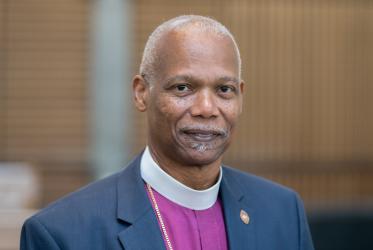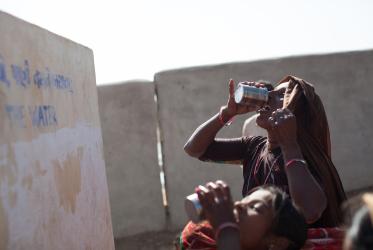esus answered, "Everyone who drinks this water will be thirsty again, but whoever drinks the water I give him will never thirst. Indeed, the water I give him will become in him a spring of water welling up to eternal life." The woman said to him, "Sir, give me this water so that I won't get thirsty and have to keep coming here to draw water."
John 4: 13-15
Nipe maji ninywe, maji ya uzima Yesu akasema mmesha yapata…(give me water to drink, the living water, Jesus said you already have it…), thus goes a famous Swahili song that captures the need and great desire for water in Kenya. Many are still pleading – give us water; how can we get water?
Degradation of the water catchment areas due to deforestation, land degradation, and industrial activity around such areas has caused untold suffering and had a negative effect on the economy. The current controversy about the Mau forest – the largest of all water catchment areas in Kenya is just the tip of the iceberg. Prolonged droughts, outbreak of Cholera and heavy floods are causing deaths and havoc, bringing suffering to many. Such events raise issues of inaccessibility to clean water, mismanagement of natural resources, ecological degradation, inequalities, sanitation, and poverty.
Against this backdrop a Presbyterian baptism recently took place of about 80 adults from the Maasai community of Kajiado (a semi-arid area in Kenya). They were baptized in a man-made pool (actually a “deeper” version of a trough). Because the rivers are dry, the water for baptism had to be purchased at a cost of Kshs. 2,000 – about 26 $. This is quite an investment in an area where people and livestock are dying due to lack of food and water. Yet the people opted for the water of baptism, rather than buying food or water, and chose also baptism by immersion. Even for infants, the minister had to be in the water as he baptized though by effusion in those cases. After the ceremony, the members of the congregation scrambled for the remaining water, dirty as it was, to feed their livestock.
This story represents the reality for many communities. There seems to be a very strong correlation between the water of baptism and water for daily use. The water of baptism represents life, the grace of God, renewal and hope. The yearning of this particular community for baptismal water at whatever cost reflects an equally deep yearning for the provision of water for ordinary use.
In contexts like this, water still remains the vehicle for taking the gospel to the people as well as the solution if their lifestyles are to change. Urban churches and others that have access to water, and those who still wish to maintain the Jordan river baptism motif, have their churches designed in such a way that there is a pool at the altar that can be opened and filled with water during baptism services. Others carry out their baptisms in swimming pools, while a majority of mainstream churches are content to carry out baptism by effusion. When I compare these different practices, it leads me to conclude that the people who thirst most for physical water thirst even more for baptismal water.
In the discourse between Jesus and the Samaritan woman (John 4:7-15), we see the Samaritan woman asking for the living waters. Yes, she needed the water from Jacob’s well, but she also needed the living water even more. God gives Jesus to the world, and Jesus offers himself to the world as the living water. This living water figuratively represents a blessing that reproduces itself, and like a spring, it is never exhausted. Through those suffering from water poverty, Christ is still begging for something to drink, for water, for the living water. In this season of Lent, as we deny ourselves comforts in order to feel the pain of others, may we come up with practical ways of providing an answer to the many who are still crying, give us water … the living waters!
Lucy Wambui Waweru from the Presbyterian Church of East Africa (PCEA) is currently serving at the Lavington United Church (which is Anglican, Methodist, and Presbyterian).
Together we can make a difference:
-
Take a moment to reflect on the story of the baptism told in this reflection… Were you aware that around the world it is often the very poorest who pay most for their water? This is because they do not have access to any public water supply with regulated tariffs but rather rely on informal private water vendors. It is also these most vulnerable who are suffering most from water scarcity and lacking access to water and sanitation.
-
To talk of access to water as a “human right” means that we hold our public authorities on all levels of decision-making and implementation responsible to prioritize the drinking water needs of the poorest and most vulnerable - and to ensure an accountable use of the available (water and financial) resources to this end.
-
In preparation for World Water Day, consider writing to your government or local authorities. Speak to them of our shared responsibility to respect water as a gift of God as well as a human right. Ask for information about the actions they are taking to guarantee and implement the human right to water for all people, locally and internationally.
Links to further information:
-
Stirring the Waters (Women magazine No 57 / 2006)
-
Waterholes Restoration Project (Maasai Association)
-
Global Warming Is Real: We Must Do Something Urgently (Wangari Maathai)




